MARKET OVERVIEW
The Global Windshield Augmented Reality Head-Up Display (AR HUD) Market represents a cutting-edge technology converges with automotive innovation, redefining the driving experience. At the forefront of this market are Windshield AR HUD systems, seamlessly integrating augmented reality into the driver's field of vision.
Windshield AR HUD systems transcend traditional dashboard displays, projecting critical information directly onto the vehicle's windshield. This technological leap enhances driver safety by ensuring that vital data, such as navigation directions, speed, and other relevant information, remains within the driver's line of sight, minimizing the need for distracting glances away from the road.
A key driver of the Global Windshield AR HUD Market is the relentless pursuit of enhancing driver safety and providing a more intuitive driving experience. By overlaying digital information onto the windshield, these systems enable drivers to access critical details without diverting their attention from the road. This not only reduces the risk of accidents but also contributes to a more efficient and confident driving experience.
Moreover, the market is witnessing a surge in demand as automakers and technology developers collaborate to refine and expand the capabilities of Windshield AR HUD systems. The integration of augmented reality goes beyond basic data display, with features like lane departure warnings, real-time traffic information, and even advanced driver-assistance systems (ADAS) enriching the driving environment.
Beyond safety, the Global Windshield AR HUD Market is carving a niche in enhancing overall driving aesthetics. The seamless fusion of digital information with the physical surroundings creates a futuristic and sophisticated driving experience. As a result, consumers are increasingly valuing Windshield AR HUD systems as a premium feature in modern vehicles.
The market's growth is further fueled by the evolving consumer preferences for smart, connected vehicles. With the automotive industry embracing the era of electric and autonomous vehicles, Windshield AR HUD systems are positioned as an integral component in the transition toward smarter and safer transportation solutions.
The Global Windshield AR HUD Market is not merely a segment within the automotive industry; it is a testament to the ongoing convergence of technology and transportation. As these systems continue to evolve, the driving experience is set to undergo a paradigm shift, where augmented reality seamlessly integrates with the road ahead, creating a safer, more intuitive, and aesthetically pleasing journey for drivers around the world.
Global Windshield AR HUD market is estimated to reach $2,252.6 Million by 2030; growing at a CAGR of 29.5% from 2023 to 2030.
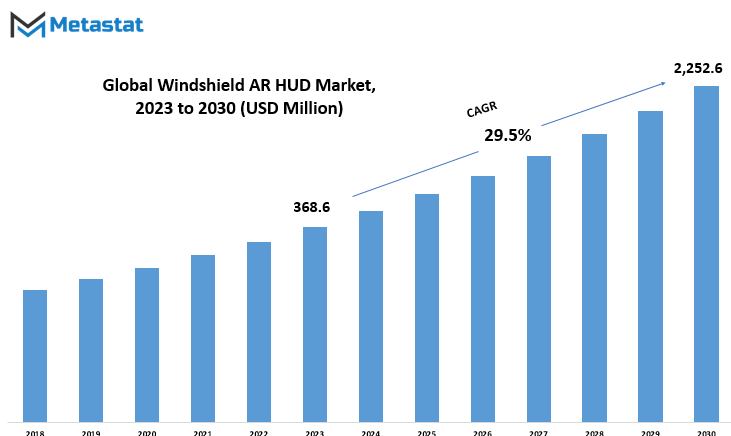
GROWTH FACTORS
In the global Windshield Augmented Reality Head-Up Display (AR HUD) market, certain key factors are steering its trajectory. The increasing demand for Advanced Driver Assistance Systems (ADAS) stands out as a prominent driver, reflecting the growing consumer preference for enhanced safety features in vehicles. ADAS, with its array of safety-oriented technologies, has become a pivotal consideration for both manufacturers and consumers.
Simultaneously, the market is propelled by the rising adoption of connected cars, signifying a broader trend towards vehicles integrated with advanced communication technologies. The synergy between AR HUD and connected cars amplifies the driving experience, providing real-time information to the driver directly on the windshield. This integration aligns with the contemporary demand for smart, interconnected vehicles that go beyond mere transportation.
However, amidst this propulsion, challenges emerge. The high cost associated with implementing AR HUD technology becomes a potential impediment to widespread adoption. The integration of advanced features often entails a financial commitment that might deter some consumers and manufacturers, creating a barrier to entry for certain market segments.
Another challenge is the lack of standardization in AR HUD technology, hindering seamless integration across different vehicle models and brands. This lack of uniformity can complicate the manufacturing process and limit the interoperability of AR HUD systems, posing a challenge for both producers and consumers seeking consistency in technology adoption.
One such opportunity lies in the realm of improving driver safety. As advancements in AR HUD technology continue, the focus on enhancing safety features becomes a potential avenue for market growth. The ability of AR HUD systems to project crucial information directly onto the windshield, minimizing the need for drivers to divert their attention, aligns with the overarching goal of making driving safer and reducing the risk of accidents.
The global Windshield AR HUD market embodies a dynamic interplay of driving forces and challenges. The surge in demand propelled by the integration of ADAS and connected cars coexists with obstacles like high costs and standardization concerns. Navigating these challenges, however, presents the market with the prospect of creating safer driving experiences, thereby fostering potential growth in the foreseeable future. The road ahead for the Windshield AR HUD market is shaped by a delicate balance between technological advancements, consumer demands, and the imperative of ensuring safety on our roads.
MARKET SEGMENTATION
By Type
In the expansive landscape of the global Windshield Augmented Reality Head-Up Display (AR HUD) market, the segmentation by type brings forth distinct categories that play a pivotal role in shaping the industry’s dynamics. One such classification is the Regular AR HUD, a segment that held a substantial value of 208 million USD in the year 2022. This segment, characterized by its conventional attributes, constitutes a significant share of the market, reflecting its enduring relevance.
Further delving into the specifics, another facet of the market is the Ultra-Thin Waveguide HUD. This segment, with a valuation of 83.2 million USD in 2022, carves its niche by offering a more streamlined and slender approach to augmented reality displays. The significance of this segment lies not only in its monetary value but also in its capacity to cater to a distinct consumer preference for a sleek and minimalistic design.
Examining the two segments side by side, it becomes evident that the Regular AR HUD, with its higher valuation, maintains a stronghold in the market, possibly owing to its familiarity and established presence. On the other hand, the Ultra-Thin Waveguide HUD, although holding a lesser value, signifies a growing trend toward more compact and modernized AR solutions.
These market segments serve as microcosms, representing the diverse consumer demands within the Windshield AR HUD domain. The Regular AR HUD mirrors tradition and reliability, while the Ultra-Thin Waveguide HUD embodies innovation and a response to the evolving aesthetic preferences of the consumer base. As we navigate the dynamic landscape of technological advancements, these segments encapsulate the nuanced choices consumers make, shaping the trajectory of the Windshield AR HUD market.
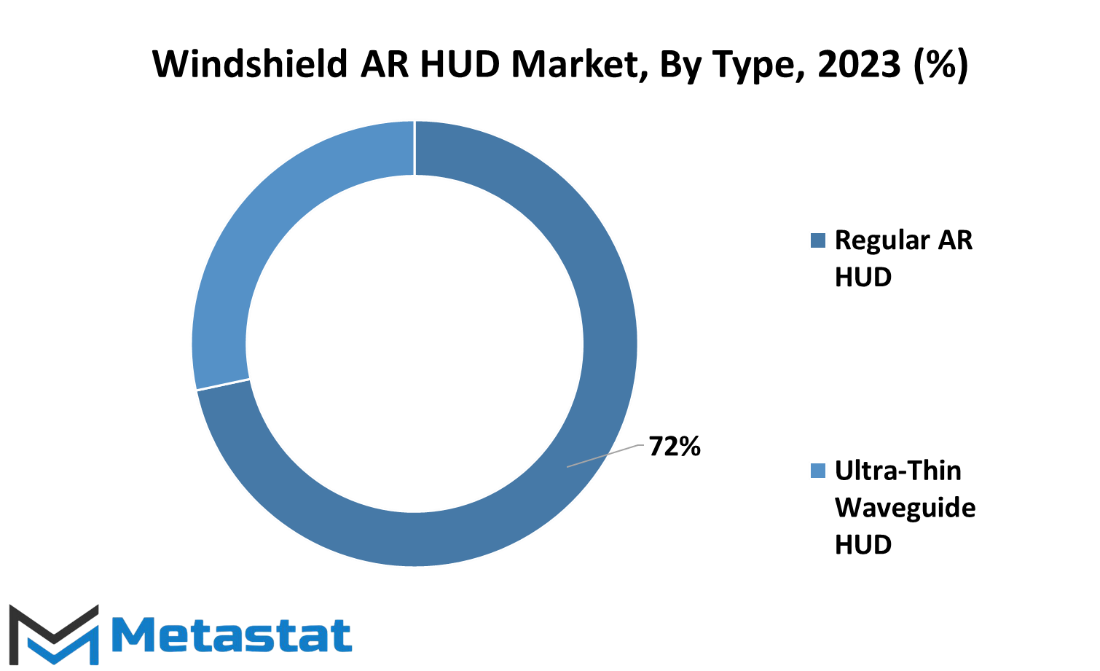
By Component
The worldwide market for Windshield Augmented Reality Head-Up Displays (AR HUD) is a dynamic landscape with various components contributing to its growth. In 2022, the market witnessed significant values in different segments. The Combiners segment held a value of 85.4 USD Million, indicating its substantial presence and impact. Projector Units, another integral component, boasted a valuation of 118 USD Million, underscoring its considerable market share.
Network Modules, a crucial aspect of the global Windshield AR HUD market, recorded a value of 22.3 USD Million in 2022. This signifies its role in the overall ecosystem and its recognition as a noteworthy contributor. Similarly, Mirrors, with a valuation of 16.8 USD Million in the same year, further diversified the market landscape.
Beyond these primary components, Camera Modules and other elements played their part in shaping the overall market scenario. While Camera Modules emerged as a pivotal player, the category labeled as Others contributed to the market’s diversity.
This distribution of values across various components provides insights into the intricate dynamics of the global Windshield AR HUD market. The Combiners, Projector Units, Network Modules, Mirrors, Camera Modules, and Others collectively constitute the driving forces behind the market’s performance. The market’s evolution is not a monolithic process; instead, it reflects the diverse interplay of these components, each with its unique significance.
As we learn the details of these segments, it becomes evident that the market’s health is contingent upon the equilibrium maintained among these components. The valuation of each segment in 2022 serves as a snapshot, capturing the relative importance and impact of Combiners, Projector Units, Network Modules, Mirrors, Camera Modules, and Others.
The global Windshield AR HUD market is a multifaceted entity, with its vitality emanating from the symbiotic relationship among its diverse components. Combiners, Projector Units, Network Modules, Mirrors, Camera Modules, and Others collectively steer the market forward, with each component contributing uniquely to its overall vigor and resilience. This nuanced understanding of the market dynamics underscores the need for a comprehensive perspective when evaluating its trajectory and prospects.
By Application
In today’s dynamic world, technological advancements continue to shape various industries, and the automotive sector is no exception. One noteworthy development is the emergence of the global Windshield Augmented Reality Head-Up Display (AR HUD) market. This technology has gained traction, influencing how information is presented to drivers, enhancing the driving experience.
It’s essential to understand the diverse applications of Windshield AR HUD. The market is broadly categorized based on its applications, with a primary focus on two segments: Private Cars and Commercial Vehicles. These distinct applications cater to different needs within the automotive landscape.
Private Cars, comprising personal vehicles used for daily commuting and leisure, represent a significant segment within the Windshield AR HUD market. The integration of AR HUD technology in private cars aims to provide drivers with a more intuitive and immersive driving experience. Navigation prompts, speed information, and other critical details are seamlessly displayed on the windshield, allowing drivers to stay informed without diverting their attention from the road.
On the other hand, Commercial Vehicles form another crucial sector in the Windshield AR HUD market. This category includes vehicles used for various professional purposes, such as delivery trucks, taxis, and other commercial transportation means. The application of AR HUD in commercial vehicles is designed to enhance safety and efficiency. For instance, real-time navigation, traffic updates, and essential vehicle statistics can be projected onto the windshield, aiding commercial drivers in making informed decisions on the go.
As we observe the growing prevalence of Windshield AR HUD in both Private Cars and Commercial Vehicles, it becomes evident that this technology is reshaping the way we interact with information while driving. The shift towards a more integrated and user-friendly driving experience underscores the broader trend of technology playing a pivotal role in modernizing traditional industries.
The global Windshield AR HUD market, categorized by applications such as Private Cars and Commercial Vehicles, reflects a transformative phase in the automotive sector. The adoption of AR HUD technology in these vehicles signifies a move towards safer, more efficient, and seamlessly connected driving experiences. As technology continues to evolve, the integration of AR HUD in automobiles is poised to become a standard feature, setting new standards for the future of driving.
REGIONAL ANALYSIS
The global Windshield AR HUD market exhibits a geographical distribution that shapes its reach and impact. This market, when viewed through a geographical lens, is demarcated into North America and Europe. These regions stand as integral contributors to the market's dynamics.
North America, a significant player in the global Windshield AR HUD market, brings its economic prowess and technological advancements to the forefront. The market's presence in this region is marked by a confluence of factors, including a robust automotive industry and a tech-savvy consumer base. As a result, North America plays a pivotal role in steering the trajectory of the Windshield AR HUD market.
On the other side of the Atlantic, Europe is another key player in this market's geographical landscape. With a strong automotive tradition and a penchant for innovation, Europe contributes significantly to the growth and development of the Windshield AR HUD market. The region's commitment to technological advancements in the automotive sector ensures a thriving market presence.
The geographical division of the Windshield AR HUD market into North America and Europe underscores the global nature of its influence. These regions, each with its unique blend of economic strength, technological acumen, and consumer preferences, contribute to the overall tapestry of the market. The market's journey, shaped by the dynamics in these regions, reflects the interconnectedness of the automotive technology landscape on a global scale.
COMPETITIVE PLAYERS
In the expansive arena of the global Windshield Augmented Reality Head-Up Display (AR HUD) market, key players hold significant sway, influencing the industry's trajectory. Among these influential figures, Continental AG and Nippon Seiki Co. stand out as key operators in the Windshield AR HUD landscape.
Continental AG, a prominent player, brings its expertise to the forefront, contributing to the development and advancement of AR HUD technology. Their involvement spans the integration of augmented reality features into windshields, enhancing the overall driving experience. With a focus on innovation, Continental AG plays a pivotal role in shaping the direction of the Windshield AR HUD market.
Nippon Seiki Co., another key player in this dynamic market, adds its unique contributions to the technological landscape. Their involvement signifies a commitment to the evolution of AR HUD applications, particularly in the automotive sector. Nippon Seiki Co.'s endeavors align with the broader industry goal of making augmented reality an integral part of the driving experience, seamlessly integrating information into the driver's line of sight.
The collaboration and competition between these key players drive the continual progress and refinement of Windshield AR HUD technology. Their contributions go beyond mere market presence; they actively shape the future landscape of the automotive augmented reality sector.
The Windshield AR HUD market, with key contributors like Continental AG and Nippon Seiki Co., epitomizes the fusion of innovation and market influence. As these players navigate the landscape, their roles extend beyond individual business interests, collectively steering the direction of augmented reality technology within the automotive industry.
Windshield AR HUD Market Key Segments:
By Type
- Regular AR HUD
- Ultra-Thin Waveguide HUD
By Component
- Combiners
- Projector Units
- Network Modules
- Mirrors
- Camera Modules
- Others
By Application
- Private Cars
- Commercial Vehicles
Key Global Windshield AR HUD Industry Players
- Continental AG
- Nippon Seiki Co., Ltd.
- Yazaki Corporation
- DENSO Corporation
- Valeo SE
- E-Lead Electronic Co., Ltd.
- HARMAN International
- Panasonic Holdings Corporation
- Huawei Technologies Co., Ltd.
- WayRay AG
WHAT REPORT PROVIDES
- Full in-depth analysis of the parent Industry
- Important changes in market and its dynamics
- Segmentation details of the market
- Former, on-going, and projected market analysis in terms of volume and value
- Assessment of niche industry developments
- Market share analysis
- Key strategies of major players
- Emerging segments and regional growth potential



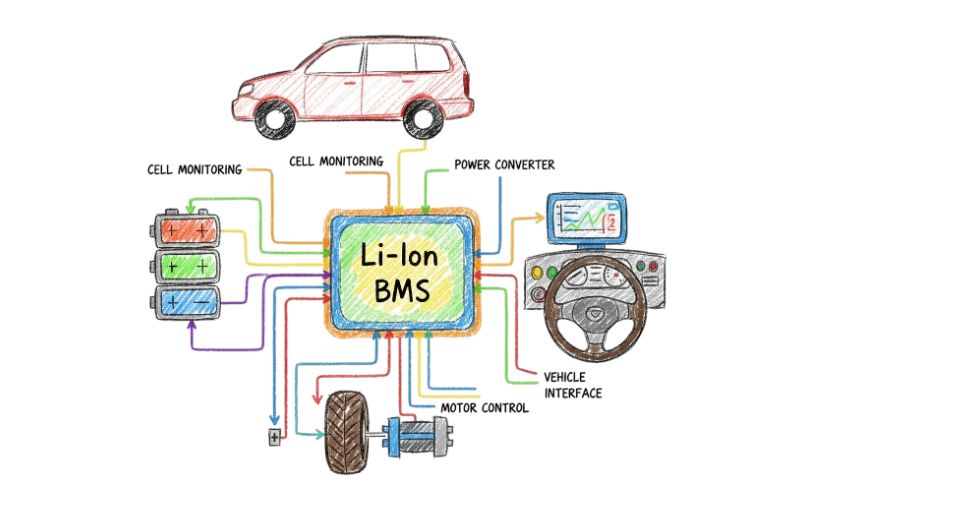
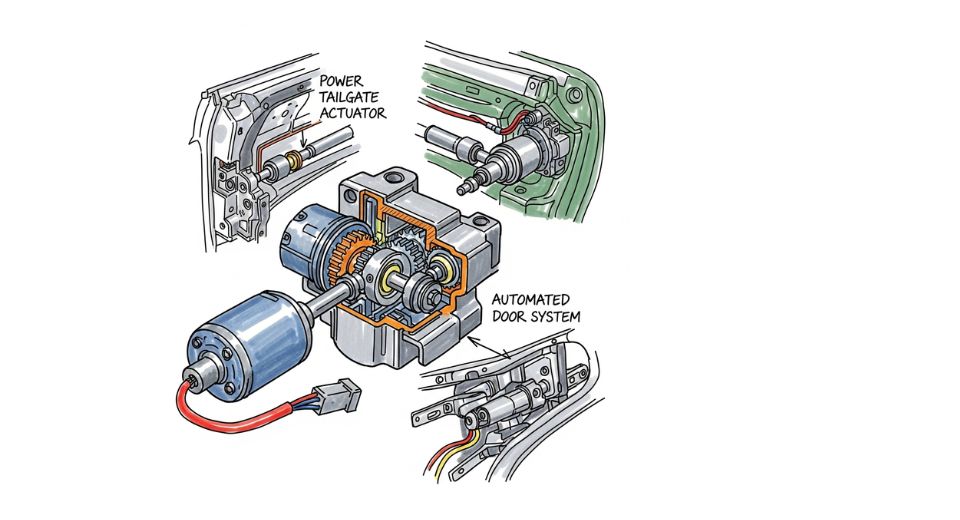
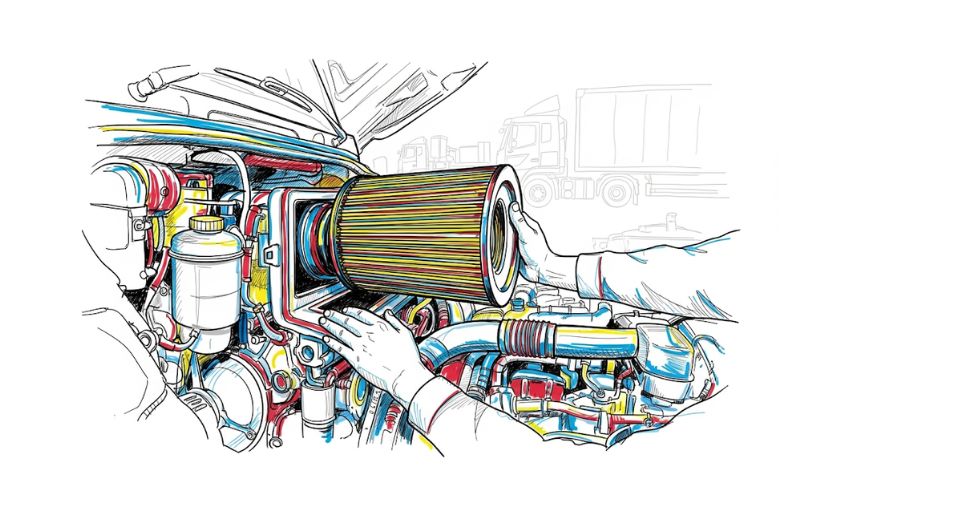
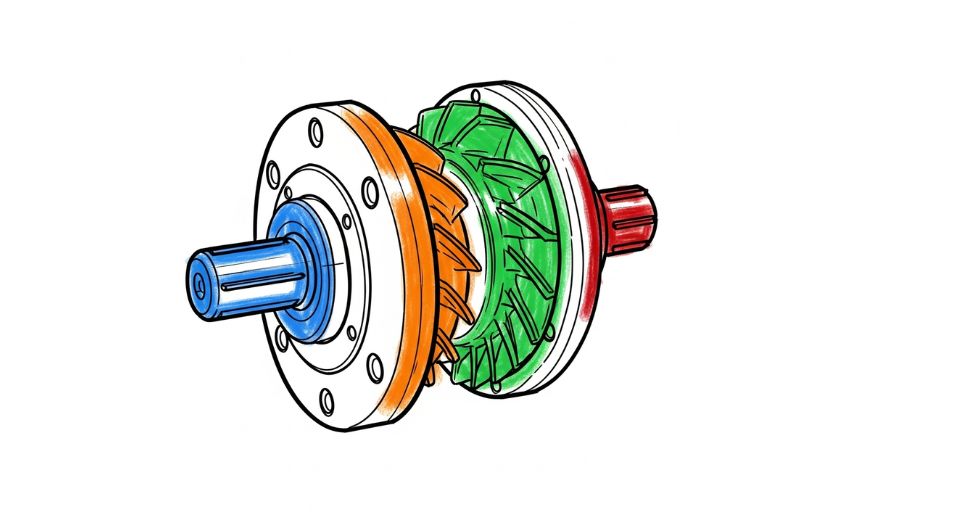




 US: +1 3023308252
US: +1 3023308252






